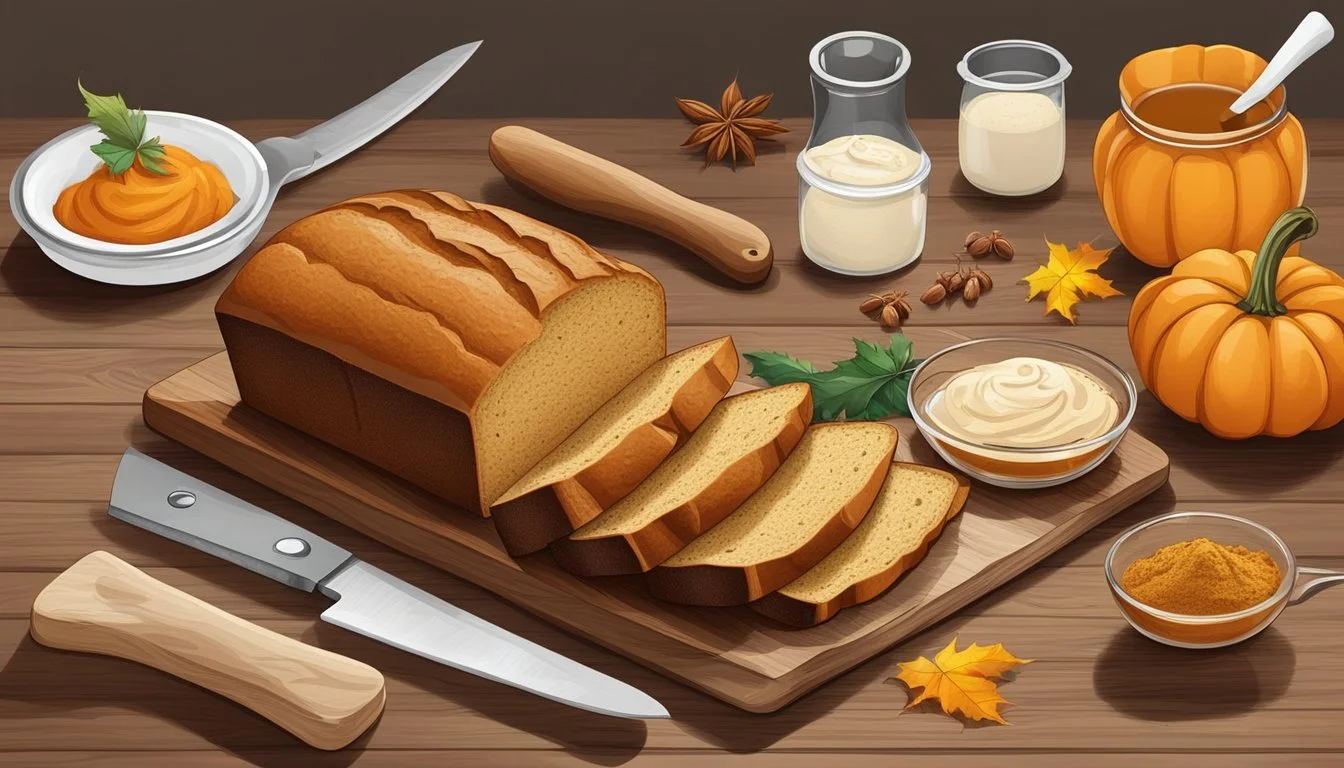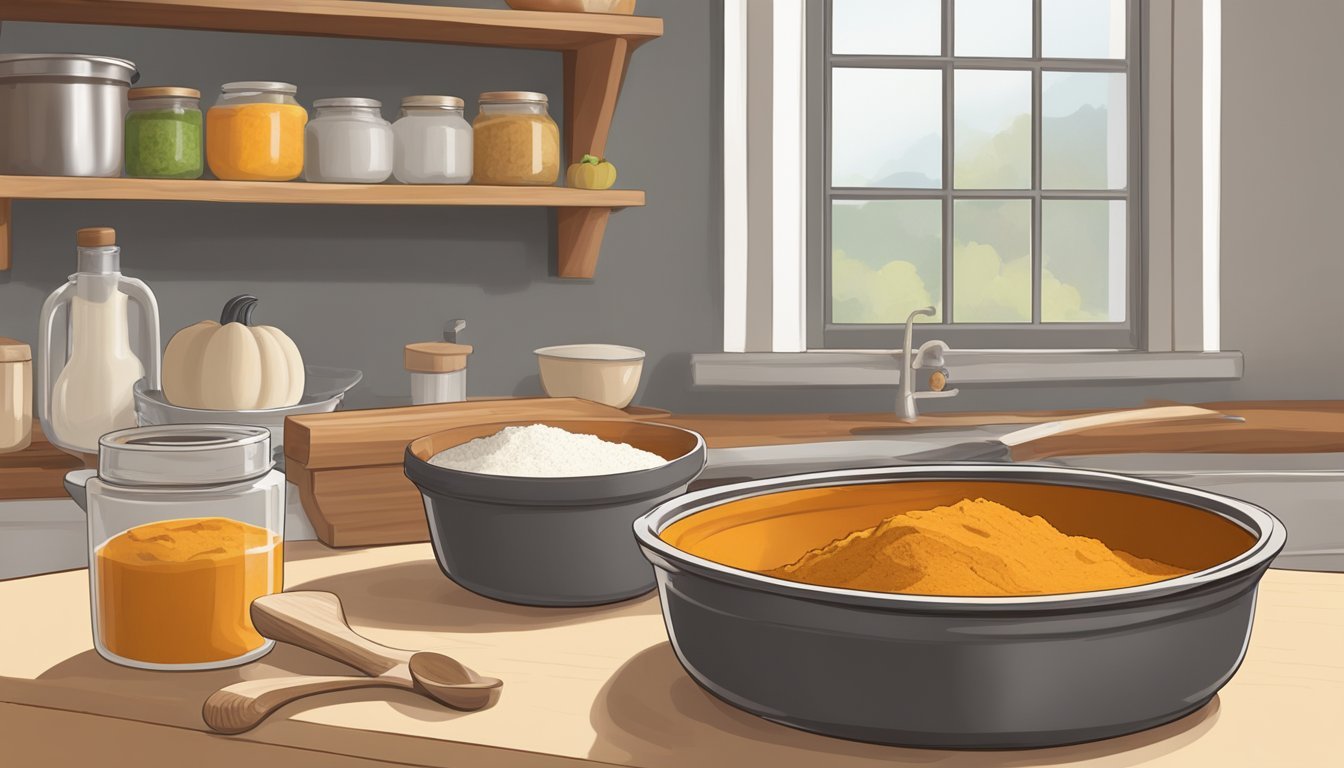Is Pumpkin Bread Gluten-Free?
Understanding Its Ingredients and Alternatives
Traditional pumpkin bread (What wine goes well with bread?) is not inherently gluten-free as it typically includes wheat flour, which contains gluten. Gluten is a group of proteins found in grains like wheat, barley, and rye and is responsible for the elastic texture of dough as well as the structure and chewiness of baked goods. Therefore, those with celiac disease or a gluten sensitivity must avoid traditional pumpkin bread recipes that use wheat flour.
However, with the rising awareness of gluten-related disorders and the increasing demand for gluten-free options, numerous recipes and commercial gluten-free pumpkin bread alternatives have become available. These alternatives often use a mixture of gluten-free flours derived from rice, almond, coconut, or other gluten-free grains and starches. Such recipes make it possible for individuals following a gluten-free diet to enjoy pumpkin bread without the gluten content. The key to achieving the right texture and flavor in gluten-free pumpkin bread lies in the correct balance of the gluten-free flour blend and other ingredients like xanthan gum, which can mimic the binding properties of gluten.
What Is Gluten-Free Pumpkin Bread?
Gluten-free pumpkin bread is a moist, flavorful alternative to traditional pumpkin bread made without ingredients containing gluten. It's typically made using gluten-free flour and sometimes includes xanthan gum to replicate the texture and structure that gluten provides in regular bread.
Understanding Gluten-Free Baking
Gluten-free baking requires substitutes for wheat flour, which contains gluten—a protein that gives baked goods their elasticity and chew. In gluten-free pumpkin bread, gluten-free flour blends are used. These blends often contain a combination of rice flour, potato starch, and other gluten-free grains. Xanthan gum might be added to the blend to give the bread better consistency and prevent it from crumbling, a common challenge with gluten-free baking.
Differences Between Regular and Gluten-Free Pumpkin Bread
The main difference between regular and gluten-free pumpkin bread lies in the flour. Regular pumpkin bread uses wheat flour, while gluten-free versions use a gluten-free flour blend. Gluten-free pumpkin bread relies on alternative binding agents like xanthan gum since it lacks gluten's natural binding properties. The taste and texture can be very similar, with the right combinations and proportions of gluten-free ingredients ensuring that the gluten-free version is just as satisfying as its traditional counterpart.
Ingredients Analysis
Analyzing the components of gluten-free pumpkin bread is crucial, as it ensures that the bread achieves the desired texture, flavor, and dietary compliance.
Gluten-Free Flour and Alternatives
Gluten-free pumpkin bread relies on a variety of flour alternatives to replace traditional wheat flour. Common gluten-free flours include rice, almond, coconut, and oat flours. A gluten-free flour blend may combine several of these to mimic the properties of wheat flour. Some recipes might use almond milk to complement these flours.
Role of Xanthan Gum
Xanthan gum acts as a substitute for gluten in gluten-free baking, providing the elasticity and stickiness that gluten typically offers. Its inclusion helps to bind the ingredients, giving the bread structure and preventing it from crumbling.
Common Ingredients in Pumpkin Bread
Typical ingredients in gluten-free pumpkin bread include eggs, sugar (granulated or brown), a variety of oils (such as coconut, canola, or avocado oil), baking powder, baking soda, and salt. Flavor enhancers like pumpkin spice, cinnamon, nutmeg, and ginger are crucial for the pumpkin flavor, while vanilla can add a pleasant aroma. Some recipes may also include chocolate chips or nuts for added texture.
Ingredients Purpose Eggs Bind ingredients; add moisture and richness Sugar Sweetness; affects texture and browning Oil Moisture; tender crumb; richness Gluten-free flour Structure; replaces wheat flour Baking powder/soda Leavening agents; help the bread to rise Spices Flavor; aroma Xanthan gum Mimics gluten; improves texture
Choosing the Right Pumpkin Puree
Selecting the correct pumpkin puree is important for gluten-free pumpkin bread. One should opt for canned pumpkin puree, not pumpkin pie filling, which contains added sugars and spices. Pure pumpkin puree delivers a more authentic and customizable pumpkin flavor, and it can be used in both dairy and dairy-free versions of the bread.
The Baking Process Explained
In crafting gluten-free pumpkin bread, understanding precise preparation techniques and baking tips is crucial for achieving a moist, tender crumb. This section will outline critical steps and advice for creating the perfect gluten-free pumpkin bread, including variations and storage solutions.
Preparation Techniques
Before beginning, ensure that you have all necessary ingredients at room temperature to facilitate easy mixing. For a one-bowl recipe, whisk together your dry ingredients like gluten-free flour, pumpkin pie spice, and, if necessary, xanthan gum—a binding agent that substitutes gluten. Next, mix your wet ingredients in a separate bowl, including pumpkin purée and dairy or dairy-free alternatives such as almond milk.
Baking Tips for Optimal Consistency
Preheat your oven and prepare your baking pan—ideally a metal loaf pan—by lining it with parchment paper or greasing it well. A key to achieving a moist pumpkin bread is not to overwork the batter; use a spatula or hand mixer to gently combine the wet and dry ingredients until just mixed.
Making Gluten-Free Pumpkin Bread
The base of gluten-free pumpkin bread is a blend of gluten-free flour, pumpkin puree, and typically a kind of fat like oil or butter. Adjust the batter's moisture with almond milk or another liquid to reach the desired consistency—a thick yet pourable batter. As a leavening agent, baking powder and baking soda help the bread rise and become tender.
Customizing Your Pumpkin Bread
To add your personal touch, consider mix-ins such as chocolate chips, nuts, or seeds. Spice up the flavor with additional spices like ginger, cloves, or allspice to complement the traditional pumpkin pie spice.
Storage and Preservation
After baking, let the pumpkin bread cool completely before storing. Keep it in an airtight container at room temperature for a few days or wrap it in aluminum foil and place it in a freezer bag to freeze for longer storage. Thaw frozen pumpkin bread in the refrigerator or at room temperature.
Troubleshooting Common Issues
If the bread is too moist or undercooked, it may need more time in the oven, or the batter was too wet. If it's dry or crumbly, the batter might have been overmixed or lacked sufficient moisture. Bread that does not rise properly could be due to expired leavening agents or incorrect oven temperature.
Serving and Pairing Suggestions
Serve gluten-free pumpkin bread as a star of the breakfast table or as a satisfying snack. Pair it with spreads like pumpkin butter, or enjoy it plain to appreciate its delicate pumpkin flavor and spices.
Gluten-Free Alternatives and Derivatives
Beyond pumpkin bread, gluten-free recipes can be adapted to create pumpkin muffins, a gluten-free pumpkin roll, or even pumpkin scones reminiscent of the popular Starbucks offerings. Utilizing a similar base recipe, these derivatives provide variety to your fall baking repertoire.
Conclusion
With these tips and techniques, baking gluten-free pumpkin bread becomes an easy and rewarding endeavor. Select high-quality ingredients and follow the steps closely to ensure a successfully baked, deliciously autumnal treat.




